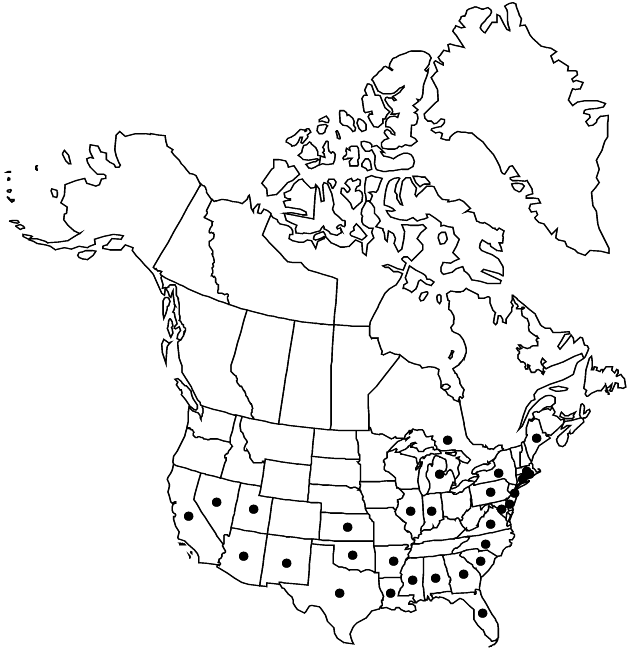Difference between revisions of "Pluchea odorata"
in F. Cuvier, Dict. Sci. Nat. ed. 2, 42: 3. 1826.
FNA>Volume Importer |
FNA>Volume Importer |
(No difference)
| |
Revision as of 19:38, 24 September 2019
Annuals or perennials, 20–200 cm; fibrous-rooted. Stems stipitate- to sessile-glandular (commonly with eglandular but viscid hairs as well), not arachnose. Leaves petiolate or sessile; blades (succulent, drying thin) lance-ovate to ovate or ovate-elliptic, mostly 4–15 × 1–7 cm, margins shallowly serrate, faces glabrate to moderately or densely pubescent (hairs crinkly). Heads in corymbiform arrays (flat-topped to rounded, often layered, sometimes incorporating relatively long, leafy, lateral branches, clusters of heads terminal on branches, some lateral branches nearly equaling or surpassing central portions). Involucres cylindro-campanulate, 5–6 × 4–8(–10) mm. Phyllaries usually cream, sometimes purplish, minutely sessile-glandular (outer usually also puberulent), sometimes glabrate. Corollas pink to rosy or purple. Pappi persistent, bristles distinct. 2n = 20.
Distribution

North America, South America, w Africa, Pacific Islands.
Discussion
Varieties 2 (2 in the flora).
Selected References
None.
Key
| 1 | Involucres 5–6 × 4–6(–7) mm; functionally staminate florets 6–13(–19); plants 20–80(–200) cm | Pluchea odorata var. odorata |
| 1 | Involucres 5–6 × 7–8(–10) mm; functionally staminate florets (14–)21–34; plants 20–60 cm | Pluchea odorata var. succulenta |